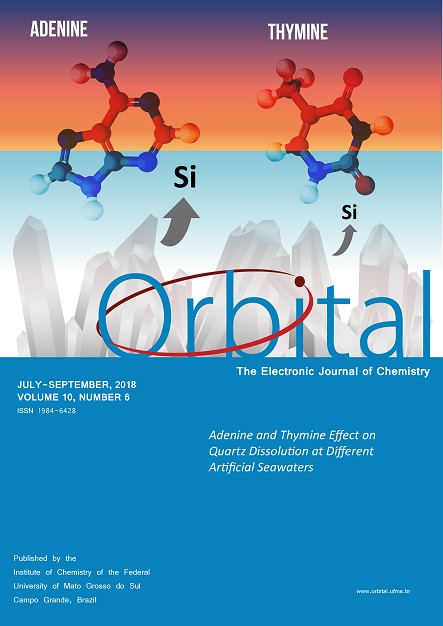Chemical Characterization and Antimicrobial Activity of Essential Oils of Mint (Mentha spicata L.) and Surinam Cherry (Eugenia uniflora L.)
- essential oils,
- antimicrobial,
- aromatic plants
Copyright (c) 2018 Orbital: The Electronic Journal of Chemistry

This work is licensed under a Creative Commons Attribution-NonCommercial-NoDerivatives 4.0 International License.
Abstract
Essential Oils (EOs) of plants are commonly commercially produced for their scents. However, they have also aroused great interest due to their functional properties as antimicrobial substances. The aim of this work was to characterise the chemical composition and evaluate the antimicrobial activity of mint (Mentha spicata L.) and surinam cherry (Eugenia uniflora L.) EOs. The EOs were obtained by water vapour entrapment in a Clevenger-type distiller and the chemical characterization was performed using gas chromatography and mass spectrometry (GC-MS). The microdilution method was used to determine the Minimum Inhibitory Concentration (MIC) for bacteria causing foodborne diseases. Chromatographic analysis of mint EO revealed the presence of 28 distinct components, of which 18 were identified, composing about 90% of the total mass. The major component linalool (58.51%), carvone and compound 19 (total of 15.1%, compounds with overlapping curves on the chromatogram), and terpinen-4-ol (5.73%) were the most abundant compounds. In the chemical characterization of the surinam cherry EO, 16 compounds were found, of which 10 were identified, with more than 75% of the mixture comprising selina-1,3,7(11)-trien-8-one and selina-1,3,7(11)-trien-8-one epoxide. Mint EO had a MIC between 1.60 and 3.20 μL.mL-1. The surinam cherry EO did not inhibit bacterial growth in this study (MIC> 25.60 μL.mL-1).

